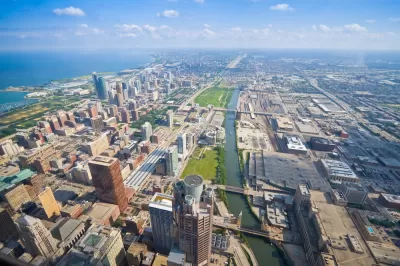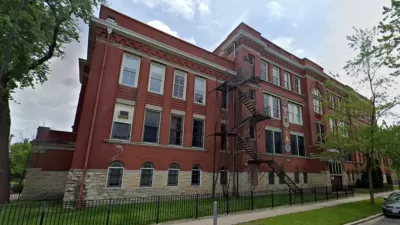A dataset on health measures in U.S. cities shows the difference in life expectancy between two Chicago neighborhoods is 30 years.

Jamiles Lartey reports on an analysis of health outcomes in U.S. cities that shows the biggest discrepancy in life expectancy between two neighborhoods in a city is in Chicago. "In predominantly white Streeterville, Chicagoans can expect to live to 90. In Englewood, where the population is virtually all black, life expectancy is just 60."
The City Health Dashboard is a project from NYU Langone Health that has compiled data on a series of health measures for the 500 largest American cities. The 30-year gap in life expectancy in Chicago highlights the extreme differences that can exist within the same city as a result of factors such as poverty, access to health care, and violence.
In Englewood, public health researchers are trying to understand what is driving the problematic health outcomes, writes Lartey:
[Rodney] Johnson is one member of a team of "community health navigators" who this week began conducting a door-to-door survey. One of the most pressing questions they’re trying to answer is why there seems to be a disconnect between services that are actually available in the community and residents who do not use them.
Lartey notes that while the situation in Englewood is dire, residents are also taking initiative to improve health and the quality of life in their neighborhood. Empty lots have become gardens and community spaces, residents advocated to bring a Whole Foods into Englewood, and nonprofit organizations are working with youth to address gun violence.
FULL STORY: 'It's totally unfair': Chicago, where the rich live 30 years longer than the poor

Trump Administration Could Effectively End Housing Voucher Program
Federal officials are eyeing major cuts to the Section 8 program that helps millions of low-income households pay rent.

Planetizen Federal Action Tracker
A weekly monitor of how Trump’s orders and actions are impacting planners and planning in America.

Ken Jennings Launches Transit Web Series
The Jeopardy champ wants you to ride public transit.

Rebuilding Smarter: How LA County Is Guiding Fire-Ravaged Communities Toward Resilience
Los Angeles County is leading a coordinated effort to help fire-impacted communities rebuild with resilience by providing recovery resources, promoting fire-wise design, and aligning reconstruction with broader sustainability and climate goals.

When Borders Blur: Regional Collaboration in Action
As regional challenges outgrow city boundaries, “When Borders Blur” explores how cross-jurisdictional collaboration can drive smarter, more resilient urban planning, sharing real-world lessons from thriving partnerships across North America.

Philadelphia Is Expanding its Network of Roundabouts
Roundabouts are widely shown to decrease traffic speed, reduce congestion, and improve efficiency.
Urban Design for Planners 1: Software Tools
This six-course series explores essential urban design concepts using open source software and equips planners with the tools they need to participate fully in the urban design process.
Planning for Universal Design
Learn the tools for implementing Universal Design in planning regulations.
Ada County Highway District
Clanton & Associates, Inc.
Jessamine County Fiscal Court
Institute for Housing and Urban Development Studies (IHS)
City of Grandview
Harvard GSD Executive Education
Toledo-Lucas County Plan Commissions
Salt Lake City
NYU Wagner Graduate School of Public Service



























